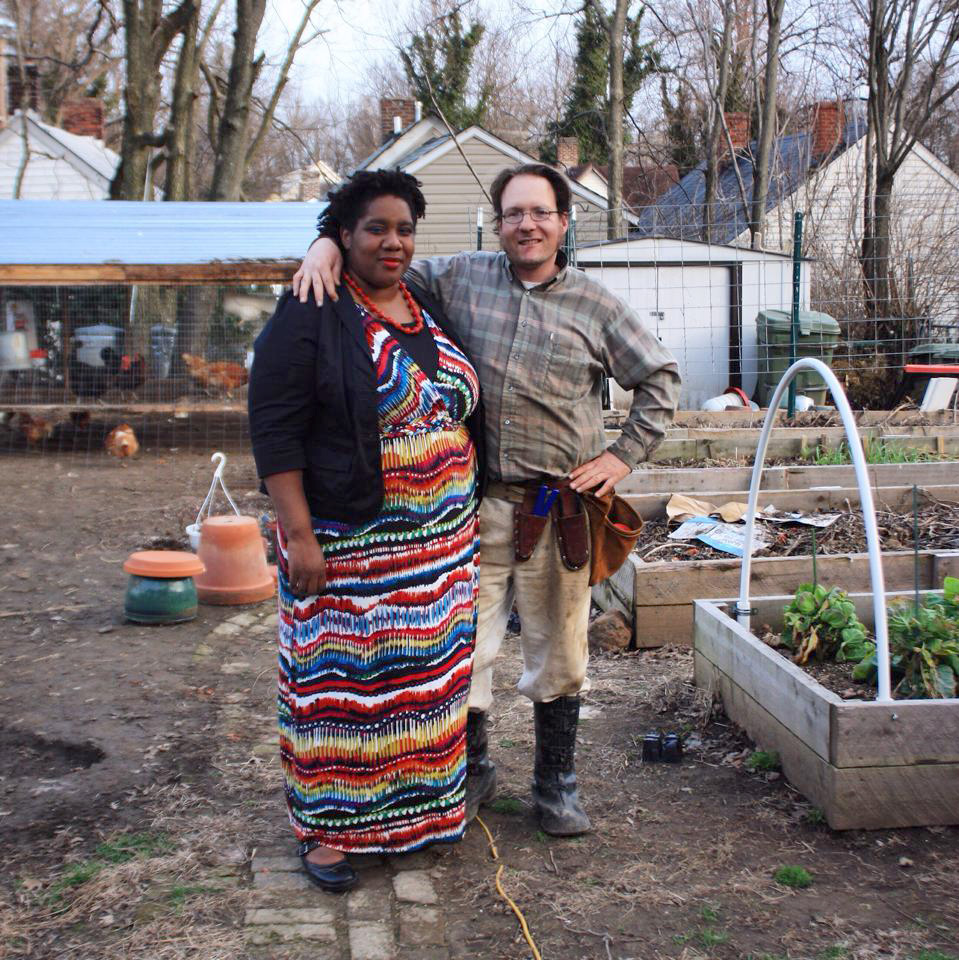by Christian Torp
“Behold, days are coming,” declares the Lord,
“When the plowman will overtake the reaper
And the treader of grapes him who sows seed;
When the mountains will drip sweet wine
And all the hills will be dissolved. Amos 9:13
On Urban Agriculture
According to the Food and Agriculture Organization of the United Nations (FAO), it is estimated that some 200 million urban residents produce food, thereby “providing 15 to 20 percent of the world’s food” (Armar-Klemesu 2000). Moreover, “Garden plots can be up to 15 times more productive than rural holdings. An area of just one square meter can provide 20 kg of food a year.”

Christian L. Torp is an attorney, missionary, activist, and urban-farmer who lives with his wife, Tanya in Lexington, KY. -Photo by Jordan Mazurek
That’s something to take notice of. With food and water scarcity on a global level regularly reported in the news with headlines like: “Inside the Looming Food Crisis” you’d be a fool not to think of the implications (National Geographic, May 2014). We’re all concerned about when we run out of gas, but haven’t we given a thought to what happens when we run out of food?
Moreover, it’s an uncontested fact that there’s a causal link between food insecurity and conflict. Increased global conflict and instability doesn’t prevent you and I from building a new world within the shell of the old. Let’s get started.
Each month I will delve into a topic germane to small scale gardening and farming in an urban environment. Though my experience has been in New York and Kentucky, our climates are much more similar than you’d think, moreover, I will tailor my suggestions and the timing of my articles to the USDA Plant Hardiness Zone for Portland, 5b (I’m located in zone 6b).
Let us begin:
Gardening starts with planning, and the time to plan is not in the hustle and bustle of spring, but right now. Whether this will be your first foray into growing your own food or not, I believe you’ll find some new ideas in this column and some new things to try.
What do you want to grow and where do you want to grow it? There are some major considerations that need to be answered before anything else can be tackled. Chief among these are your land/area resources and what foods you prefer or prefer not to eat.
At one time I was a vegetarian for compassionate reasons, and though I no longer follow that way I will not questions anyone’s personal choices. I will analyze both plant and animal methods of urban food production.
Whether you’ll be spending next summer in a rented apartment with nothing but a small balcony or you’re willing to make your whole front yard a community garden, we’ll have you covered at the West End News.
If you’re just interest in home grown tomato’s or in apocalyptic preparations with a root cellar, keeping tens of chickens, dozens rabbits and a few bee hives thrown in for good measure, you’ll find the info you need here.
On that planning front, next month we’ll look at designing your own urban food system. I’ll run down some options you have for crop and livestock possibilities that you may want to incorporate into your homestead. As the year comes to a close, we’ll look into building and beginning those individual portions of your farm.
With that said, if there’s something that you really want to know or that you just have to do, shoot me a line. I can be reached at theamosfarm@gmail.com. Or check out the Amos Farm on Facebook.
I welcome your questions, comments, topic suggestions and complaints. Shoot me a line and I’ll look to incorporate your interests into a future column.
—
Extension Master Gardener Christian L. Torp is an attorney, missionary, activist, urban-farmer and advocate for social change who lives at Justice House with his wife, Tanya in Lexington, KY.



